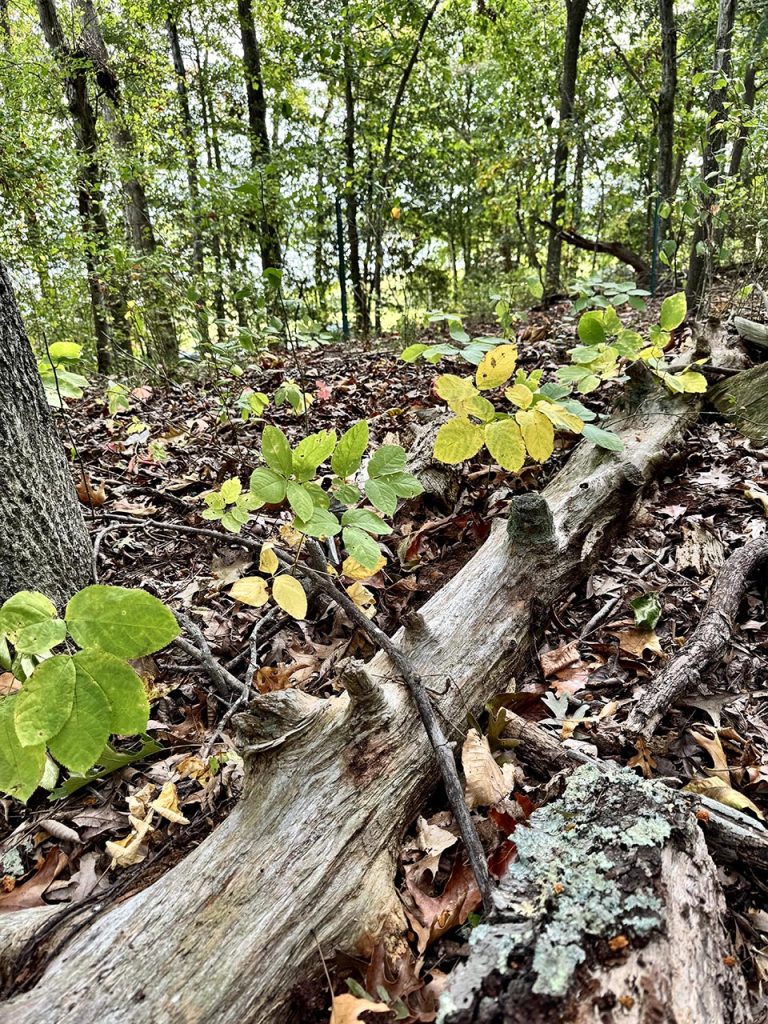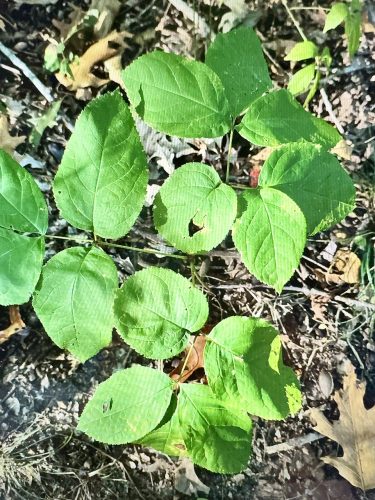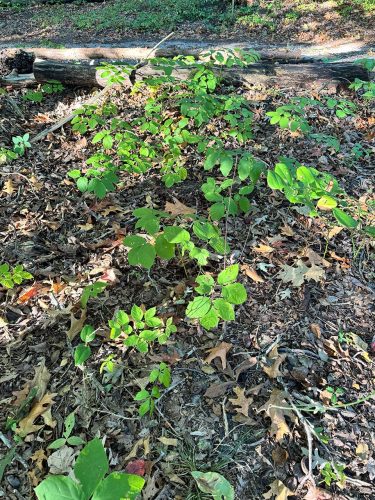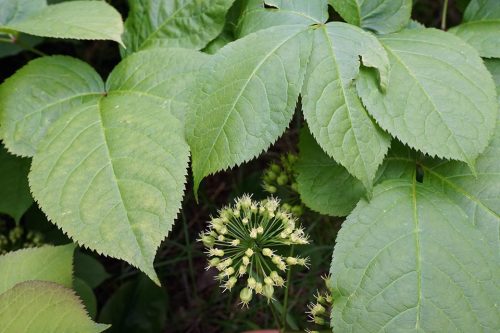Treasures Underfoot
As summer turns to fall, the forest floor and understory should not be overlooked.


On my morning stroll with our dogs, I noticed some leaves beginning to change color. Usually I look outward to the Maurice River’s forested tree line for the reds of the blackgum as they are the first trees to take on autumn’s hues.
As my years are advancing, I find myself checking my footing more frequently, and it’s made me more aware of what is happening at my feet. Or possibly it is you, the reader’s fault, as I’m ever alert to things that I might share with you about the forest floor. In early September I realized a lot of changes were happening from my knees down. No, not my agility (well that too, I suppose), but the forest understory truly reflects autumn’s arrival.
In the wooded portion of our yard I noted that the wild sarsaparilla is beginning to change from green to yellow. Not a boring yellow but a yellow that contrasts against the dark forest floor with a “Hey, check-me-out” brilliance.
Originally I would have overlooked this plant had it not been for a visit by botanist Gerry Moore over a decade ago, “You have wild sarsaparilla growing here, cool.” I asked what he could share about the herbaceous plant. “Well folks used to use it to make sarsaparilla, root beer and native Americans had medicinal uses. It grows from rhizomes, using creeping rootstocks.”
I don’t recall his exact words, but that was the essence of his message. I knew it was supposed to have an aromatic scent, and I’d had sarsaparilla soda; beyond that, I knew very little. I yanked up a root, twisted and pulverized it some, and honestly I did not denote an odor. Sassafras is also used for root beer and its roots strike me as more fragrant.
Wild sarsaparilla (Aralia nudicaulis) has a single stalk that grows 12 to 24 inches tall. The stalk divides into three with three to seven oval leaflets. Each leaflet is three to five inches long and up to two inches across. The oval leaves are widest above the mid-way point, with a pointy tip and toothed edges.

In May or June, beneath each leafy stalk are ball-shaped flower clusters referred to as inflorescence or umbel, with each flower replaced by a tiny eggplant-colored berry in late July. The flower’s spherical shape is created by all the flower stalks radiating from a common point outward. Each flower is only about 1/8 inch across. Regrettably, I forgot to look for these, and they are not easily noticed.
Our little characteristic colony carpets the forest floor over a 20-foot area. To me they look a bit like little groupings of three parasols. The plant is in the ginseng family. It can be grown from seed but most commonly is propagated by its creeping rootstock.
At first blush folks mistake the young groupings of three leaves for poison ivy. But upon closer inspection you will see groupings that exceed three and the leaves are much more rounded.
Aralia nudicaulis is distributed from Newfoundland south to North Carolina and west through the Great Plains. Its range continues in Canada to British Columbia and in the United States through the Intermountain West to northeastern Washington (D. Pavek, US Department of Agriculture and US Forestry Service). In our South Jersey region it grows in association with these ecosystem/forest types—oak-pine, oak-hickory, and maple-beech.
I enjoy reading about the Native American uses of plants as they offer cultural context to the world around us and are a reminder of the power of plants. The list of medicinal uses for this sarsaparilla seemed endless. There are four species of sarsaparilla in North America—three perennial herbs and a small exotic tree, Japanese angelica tree (Aralia elata). Two species of herb were used for medical purposes by Native Americans. Our discussion is confined to Aralia nudicaulis.
The Abnaki and Cherokee used sarsaparilla as a tonic to strengthen blood. Algonquin used an infusion of roots for children with kidney disorders and applied chewed roots for ear infections and infected gums. Bella Coola used it as an analgesic for stomach pain. Chippewa used it as an abortifacient and for stopping menstruation. The Cree and other tribes used it for dermatological purposes, especially wounds. A plethora of uses are listed, many of which relate to teas for colds and coughs, and even cancer treatment.
Wildlife does make use of the plant. The berries are eaten by three thrush species, grouse, and white throated sparrow. White-tailed deer and moose will browse on the leaves; chipmunks, skunks, bears, and foxes will consume the berries.

Charles Eiseman recently published rearing records of moths whose larvae feed on wild sarsaparilla. The monophagous shoot borer (Papaipemaaraliae) and two species of fringe-tufted moths (Epermeniidae) fed exclusively on sarsaparilla. Ten species that will feed on Aralia nudicaulis are polyphagous, meaning their larvae feed on a wide variety of plant species.
Eiseman has reported that seven additional polyphagous species have been added to the list of moths using sarsaparilla as a host plant for their larvae. Further, Eiseman reports three fly species using sarsaparilla. I’m continually reminding readers that moths and their larvae serve many important roles in the forest; the most popularly appreciated is the feeding of birds and their young.
It turns out watching my step has newfound benefits. Enjoy your hikes in Down Jersey where the forest floor has many things to identify and explore.
Sources
- Wild Adirondacks.org, Wildflowers of the Adirondacks: Wild Sarsaparilla (Aralia nudicaulis)
- New Rearing Records of Lepidoptera from Wild Sarsaparilla (Araliaceae: Aralia nudicaulis L.), Charles S. Eiseman, BioOne Digital Library, July 2024.
- Native American Ethnobotany by Daniel Moerman, 1998.









